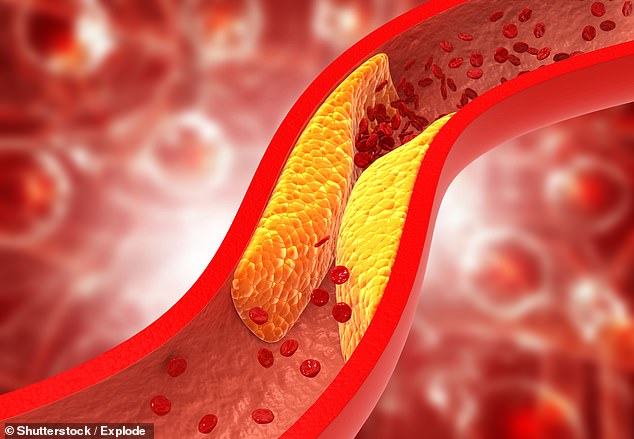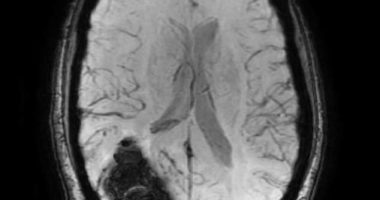Determining whether cholesterol is dangerously high can be as simple as looking in the mirror.
Doctors say that specific kinds of bumps near the eyes, and swelling in the hands and legs can indicate that your cholesterol has reached levels that raise their risk of heart attack and stroke.
Some 71 million Americans suffer high cholesterol — when a fatty substance builds in the blood vessels, damaging them and restricting blood flow to and from the heart.
Studies estimate that around 40 percent of people with the potentially deadly condition, which is diagnosed via blood test, don’t know they have it, so remain untreated.


Cholesterol is a fatty substance that can build up and damage blood vessels that supply the heart. It is found in animal products, like meat and egg yolks
Saturated fats in the diet, as well as obesity, stimulate cholesterol production in the liver. Typically, the higher the cholesterol level in the blood, the higher the risk of heart attacks and strokes.
It is thought that millions of heart attacks and strokes could be prevented every year if those with high cholesterol were spotted and treated with medication.
Experts say there are telltale signs that are easy to spot, which few people know about.
Bumps around the eyes, usually yellow-tinged because of the color of fat under the skin, are a hallmark sign of high cholesterol, as are bumps and swelling in the hands.
Those bumps on the face are called xanthelasma and usually aren’t painful. However, they could indicate fat is flowing through the bloodstream.


Yellowish bumps on the hands, yellow because the color of fat deposits, are a hallmark signal that a person has high cholesterol. Yellow bumps around the eyes typically aren’t painful but may signal fats accumulating in your bloodstream
Yet another sign on the face is a thin blue, white, or gray circle around the colored portion of the eye, the iris. The circle becomes increasingly noticeable with age and is most commonly seen in men.
The third most frequent sign of fat accumulation in the blood is called retinal vein occlusion, which causes a bulging eye. It typically occurs when the fat clumps in blood vessels break off and obstruct the vein supplying blood to the retina, causing fat leakage.
Signs are equally as noticeable in the hands. Swelling around the knuckles is common, resulting in pain in the tendons. It can occur around any tendon, including the heel.
High cholesterol can also cause pins and needles in the hands and legs due to limited blood flow to those areas. It doesn’t cause numbness, though. So if you can’t feel your fingers, you’re probably in the clear.
Cholesterol is produced in the liver, supporting crucial bodily processes, including shoring up the protective membranes around cells, making hormones, and digesting food.
Pale nails are another sign to watch for, indicating that oxygenated blood flow is impeded to the hands.
Tingling in the legs could indicate peripheral artery disease, characterized by narrowed peripheral arteries that carry blood away from the heart to other parts of the body.
PAD also increases the risk of ulcers, sores that develop on the skin or in mucus membranes within the body, such as the mouth. It also affects blood flow to the kidneys and the stomach.
Doctors warned recently that around 65 million Americans could be at risk of developing a deadly stroke or heart attack in middle age due to a specific protein in cholesterol called lipoprotein a.
It is known to be more harmful than other types of LDL, as it is made from ‘sticky’ proteins that enable it to quickly form a clump, interfering with healthy blood flow.
Source: Mail Online







